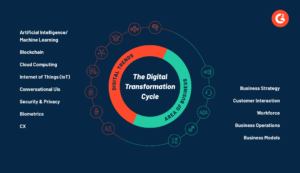Buying products for your daily life or your business can be a real challenge, especially with the vast variety of options the market offers. With the growing popularity of digital products, many people wonder: “Should I choose a digital product or a physical one?” If you’ve ever asked yourself that question, know you’re not alone.
This guide was created to help you understand the differences and advantages of each type of product so you can make the best choice based on your needs and personal preferences. By the end of the article, you’ll have a clearer understanding of when to choose a digital product, when to opt for a physical one, or even how to combine the two for a more efficient shopping experience.
1. Understanding the Difference: Digital Product vs. Physical Product
Before diving deeper, let’s clearly define what digital and physical products are.
- Digital Products: These are products that do not have a tangible form, meaning they do not take up physical space and are usually delivered immediately via digital platforms. Examples include e-books, online courses, software, music, videos, and templates.
- Physical Products: These are traditional products that you can touch, see, and often transport physically. Examples include printed books, clothes, electronics, furniture, tools, and others.

The choice between these two types of products depends on various factors, including your practical needs, budget, and personal preferences. Let’s explore when you should choose one over the other.
2. When to Opt for Digital Products
Digital products have gained tremendous popularity, and for good reason. They offer several benefits that make them highly attractive to both consumers and businesses. Below are some scenarios in which digital products are the best choice.
2.1. When You Need Immediate Accessibility
If you’re looking for something you can access instantly after purchasing, digital products are the ideal choice. There’s no need to wait for shipping or worry about stock availability, as they are available for download or streaming as soon as the transaction is completed.
For example:
- E-books: No need to wait for days for your book to arrive in the mail. Just download it, and you can start reading immediately.
- Online Courses: If you want to learn a new skill quickly, you can access the course on your computer or smartphone right after the purchase, without waiting for printed materials to arrive.
2.2. When You Want Less Logistic Hassle
Digital products do not require physical shipping, which means no shipping costs and no need to deal with returns. This makes purchases faster and simpler, as well as eliminating issues like package loss or damage during shipping.
Practical example:
- Productivity or Design Software: You can download it directly from the site or sales platform, without worrying about receiving a physical box.
2.3. When You Value Sustainability
Digital products do not consume physical resources and do not create packaging waste. Therefore, if you’re a conscious consumer looking to reduce your environmental impact, digital products are a more sustainable choice.
For example:
- Music and Video Subscriptions (like Spotify, Netflix): Instead of buying physical CDs or DVDs, you can subscribe to a streaming service, saving materials and reducing waste.
2.4. When You’re Looking for More Affordable Prices
Since digital products do not involve physical manufacturing, shipping, or storage, they are often cheaper than their physical counterparts. If your budget is more limited, it might be more economical to go for a digital version than a physical product.
2.5. When You Need Customization
Many digital products can be easily customized to meet your specific needs. For example, you can download design templates and edit them for your own use, or even create your own online course based on your areas of interest.
Examples of Popular Digital Products:
- E-books: Read books anywhere, anytime.
- Online Courses: Learn new skills quickly and conveniently.
- Design/Productivity Software: Tools for designers, marketers, or small businesses.
- Digital Music and Movies: No need for physical storage.
3. When to Opt for Physical Products
Although digital products are convenient and accessible, there are many situations in which physical products are irreplaceable. Let’s see when you should choose physical products.
3.1. When You Need Something Tangible
If you value the tactile experience of having a physical object in hand, physical products are the right choice. This is especially important for items that you’ll use directly in your daily life, such as clothes, furniture, electronics, and household items.
Example:
- Clothes and Shoes: Buying a physical product to try it on and ensure it fits well and is comfortable.
3.2. When You Want to Preserve Something Physical or Collectible
Many people still prefer to have a physical copy of books, records, and other collectible items. For collectors, the experience of owning a physical item cannot be replaced by a digital version.
Example:
- Special Edition Books or CDs: Limited edition books or records may have sentimental or collector’s value.
3.3. When the Product Quality Depends on the Physical Format
Some products require a physical format to fully enjoy the experience. In the case of electronic devices, for example, you need a physical device to use software or digital components.
Example:
- Electronics: Headphones, smartphones, tablets, and other gadgets require you to buy the physical device.
3.4. When You Want Durability and Long-Term Use
Well-made physical products can be highly durable and provide long-term benefits. If you’re looking for something that will last for many years, a physical product may be the right choice.
Example:
- Furniture: Buying a good piece of furniture can be a long-term investment.
3.5. When You Prefer to Avoid Dependence on Technology
If you want to avoid relying on an internet connection or digital devices, physical products are more reliable. For example, a printed book can be read without needing a battery or internet access.
Examples of Popular Physical Products:
- Printed Books: For those who love the feel of turning pages.
- Electronics: Gadgets and devices that require a physical format.
- Clothes and Shoes: Items that need to be tried on and felt.
- Physical Gifts: Items for a more personal gift-giving experience.
4. Combining Digital and Physical Products
A great shopping strategy is to combine digital and physical products to get the best of both worlds. A common example of this is books: you might purchase an e-book for quick reading and a printed book for collecting and gifting.
Another example would be buying an online course and a physical kit of tools or materials to complement your learning.
5. Conclusion: What’s the Best Choice for You?
The choice between digital and physical products really depends on your specific needs, budget, and personal preferences. Both types of products offer unique advantages and disadvantages, but with the right information, you can make more informed decisions.
If you’re looking for convenience, immediate access, and lower costs, digital products are a great choice. On the other hand, if quality, tangibility, and the experience of the physical product are more important to you, physical products remain essential. And of course, in many cases, combining both can be the perfect solution.

Now, you’re ready to make the right choice for your needs. Happy shopping!





